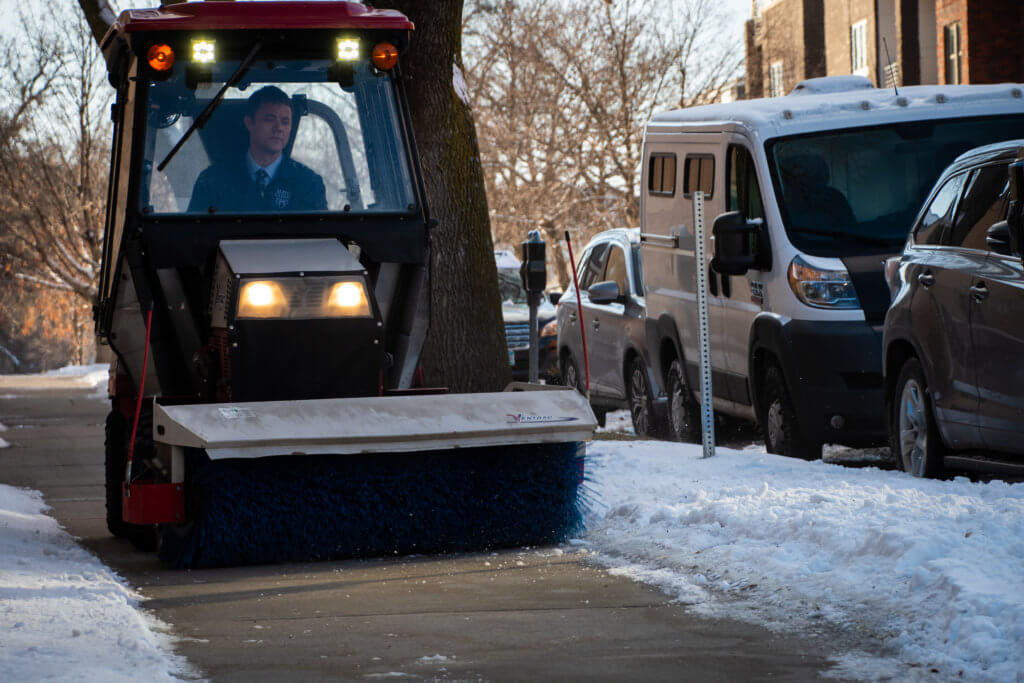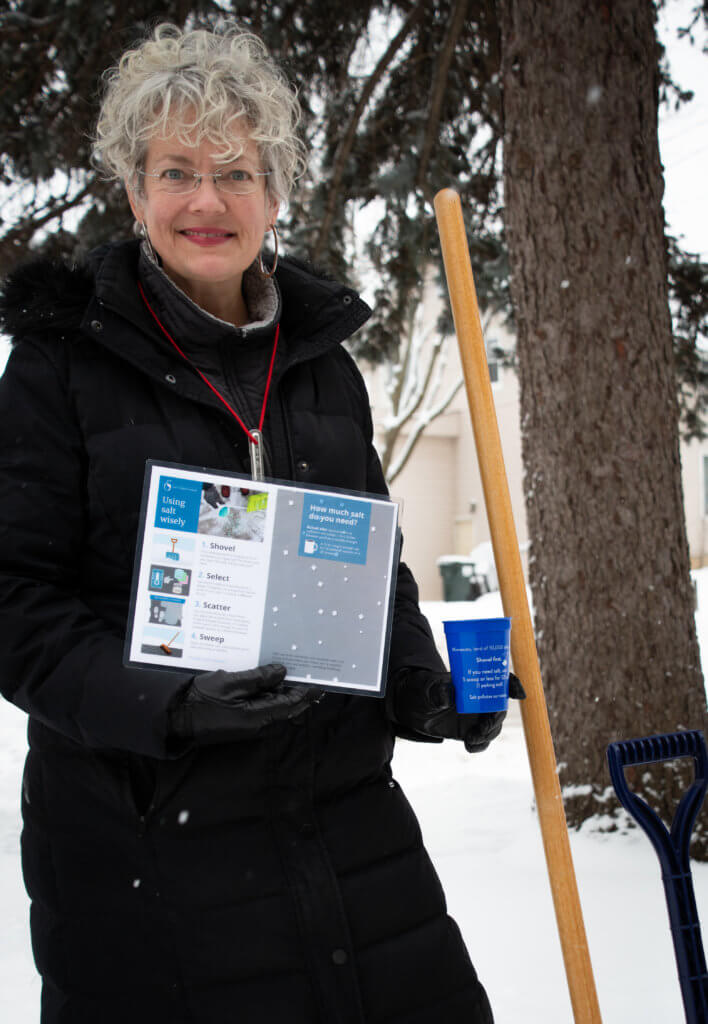News
Mayo Clinic takes a smart approach to salt
Tue, Jan 28, 2020“Three years ago, if you had told me that I could reduce salt and increase safety, I wouldn’t have believed it,” said Nick Queensland, ground maintenance supervisor at Rochester’s Mayo Clinic. Over the past year, despite one of the snowiest winters on record, he has done just that. Smart salting has substantially reduced his use of rock salt across the Mayo’s 15 miles of sidewalks and 110 acres of paved surfaces. Reducing salt use has helped the environment and the Mayo’s bottom line.

When Nick first became Mayo’s ground maintenance supervisor, he noticed the grass, shrubs, and trees in their landscaping were struggling. After a series of soil and plant tissue tests, he learned that the problem was salt. The rock salt (sodium chloride) most commonly used for deicing roads and sidewalks often bounces off of pavement and into the soil, causing serious damage to plants. Once Nick identified salt as the issue, he focused on reducing its use across the Mayo’s campus.
After some initial research, Nick decided to host a Smart Salting Training, offered by the Minnesota Pollution Control Agency and Fortin Consulting, at the Mayo Clinic. The training shared best practices for winter maintenance while educating about the toll road salt takes on the environment. His entire maintenance staff and contractors attended, and Nick knew the message made a big impact on attendees. “Whether it’s affecting recreational waters or drinking water, they made it meaningful to everybody. I could see that it touched everyone in the room.”
In the metro area alone, an estimated 365,000 tons of road salt is applied each year. As much as 78% of that salt ends up in groundwater or local lakes and rivers. Once chloride enters the water, there’s no cost effective means to remove it. As a result, as many as 50 Minnesota lakes and streams have chloride levels that are toxic to fish and aquatic life. It only takes one teaspoon of salt to permanently pollute five gallons of water.
Small adjustments add up
After the smart salting training, Nick and his team reassessed their approach to winter maintenance, down to every last salt barrel. They evaluated the location of salt barrels near doorways and removed 25% of them. In the remaining barrels, he replaced large salt scoops with small, 12 ounce cups that were printed with a reminder: 12 ounces of salt (about the size of a coffee mug) is enough salt to deice two parking stalls.
When the temperature dips below 15 degrees, salt doesn’t work as a deicer. In those cases, Nick’s crew uses granite chips or “chicken grit” instead, which can be found at your local hardware store. This inexpensive alternative to salt or sand is easy to sweep-up and reuse.
As Nick audited the Mayo’s use of salt, he realized that none of his crew or contractors knew exactly how much salt they were using on roads and sidewalks. He brought every salt spreader in for calibration. This cost-effective approach allowed him to adjust existing equipment to meet his new salt reduction goals.
Choosing the right tools for snow removal has also made a big difference at the Mayo. A rotary brush is an especially effective weapon against sidewalk snow. When it snows 3 inches or less, Nick has found that a rotary brush can clear concrete so thoroughly that there is little need for sidewalk salt.

“It’s a team effort,” Nick said. With the cooperation of his maintenance crew, contractors, and the Mayo’s safety and sustainability departments, he was able to reduce their salt use by 60%. After the smart salting training, the motivation to protect the environment was evident. Nick said, “Everyone was doing it for the right reasons.”
Looking forward to a green future
It will take a massive effort to combat the rising levels of salt in our waterways. Take it from Kelly Rae Kirkpatrick, a Master Water Steward and community organizer in Rochester. She brings a global perspective to her local work. Her career began in the fashion industry, where she learned about the devastating effects of consumerism on the environment. She later became a landscape designer and earned a masters degree in biology. The more she learned, the more she realized that, “we don’t understand what’s below our feet most of the time.”
When a major flood hit Rochester in 2008, she felt a new sense of urgency to protect the environment in her own community. She sees great potential for improvement in the Mayo’s innovative approach to landscape management as they continue to grow the city. Within her neighborhood association, she has begun a smart salting campaign. Nick spoke to residents about his progress reducing salt use at the Mayo and distributed those 12 ounce cups printed with instructions for reducing sidewalk salt.

Homeowners have an important role to play during the winter season. Effective snow removal is the first step toward reducing sidewalk ice. For snow removal, Kelly highly recommends an ergonomically designed steel shovel that will allow you to clear snow down to the blacktop. She also suggests picking up salt with gloved fingers to sprinkle it instead of dumping or shaking the cup above icy patches.
Kelly is hopeful about the future growth of Rochester, especially with people like Nick Queensland in leadership roles at the Mayo. She is now in talks with city officials about green infrastructure that addresses Rochester’s housing needs. Next season, Nick is looking forward to improving pollinator landscape across the Mayo campus, among other projects. As Kelly looks forward to the future of her city, she says “we have so many opportunities to do better, to educate, and to do things the right way.”

Check out Clean Water MN’s salt tip card for more information about how to use salt wisely.

